Here’s a short Halloween-themed (orange & black) cicada video for you. It’s just fun — nothing scientific. The video stars Neotibicen linnei, Magicicada septendecim, Neotibicen tibicen, and Neocicada hieroglyphica.
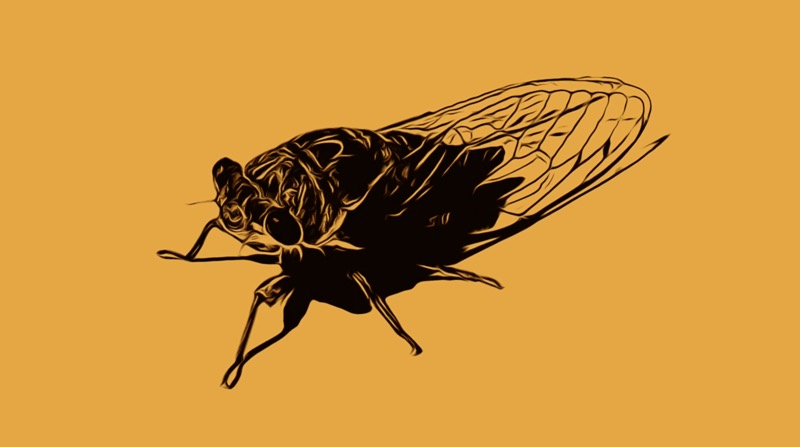
Here’s a short Halloween-themed (orange & black) cicada video for you. It’s just fun — nothing scientific. The video stars Neotibicen linnei, Magicicada septendecim, Neotibicen tibicen, and Neocicada hieroglyphica.

Here’s a video of a Neotibicen lyricen nymph crawling up the trunk of a fir tree, looking for a place to molt. Note the dark eyes and green wing buds. This particular pine tree is my go-to for Lyric cicadas. Here’s another: Neotibicen lyricen molting.
Thumbnail:
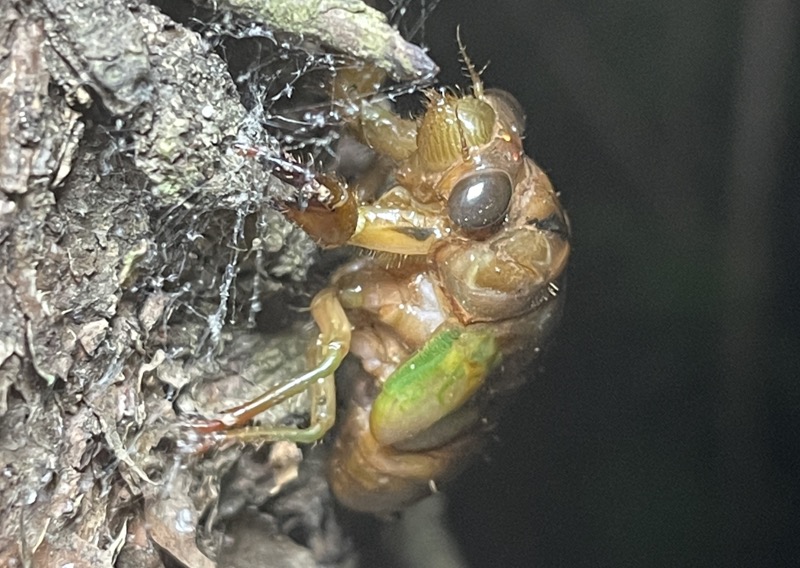
We had a short Neotibicen cicada season in New Jersey in 2022.
I’m used to finding molting Neotibicen cicadas between the first week of July and the last week of August. This year they started emerging in the first week of July, but the last one I found was on August 2nd.
I wonder if the short season was due to the major drought or heat waves New Jersey experienced this summer.
Here are some photos of a freshly-molted/teneral(soft) Morning cicada:
Male freshly-molted Neotibicen tibicen tibicen. Ventral view. Note the opercula.
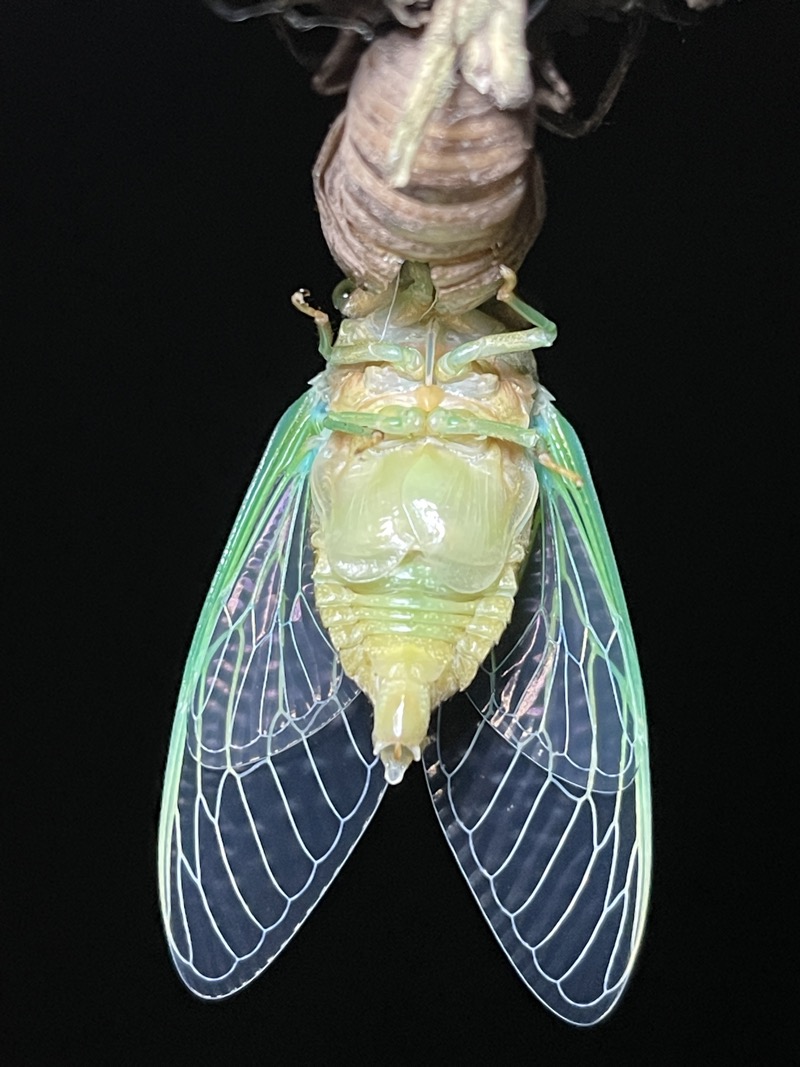
Male freshly-molted Neotibicen tibicen tibicen. Side view.
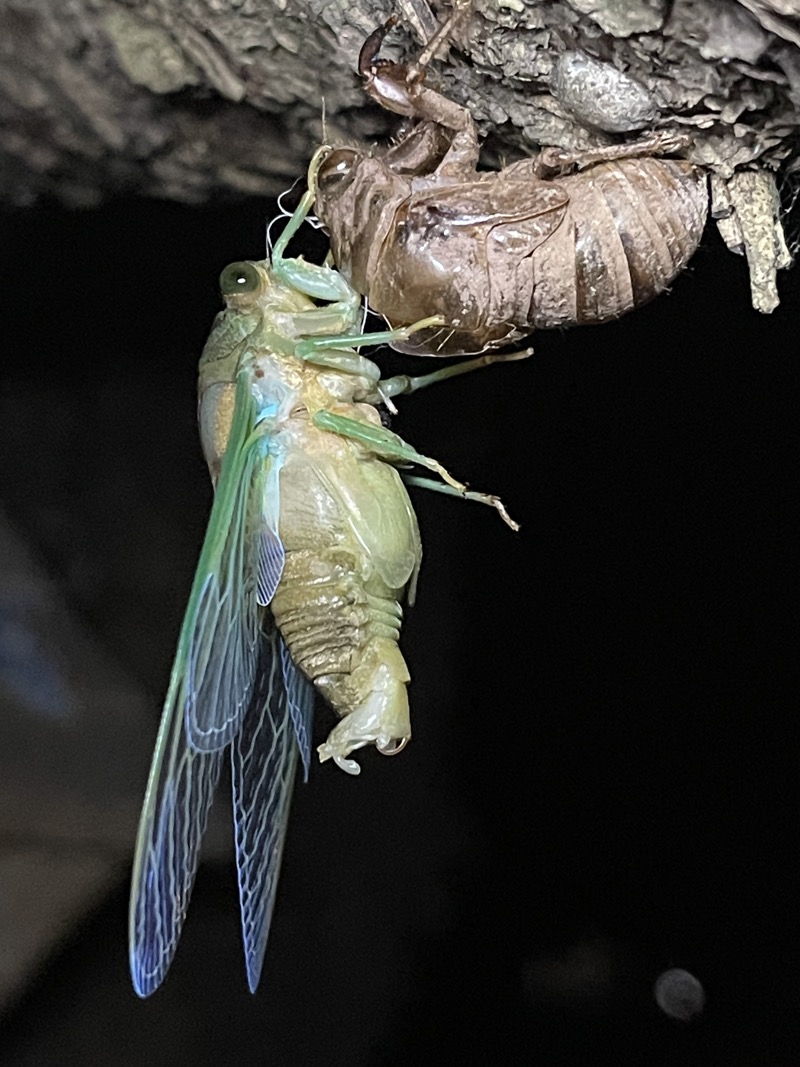
Male freshly-molted Neotibicen tibicen tibicen with folded wings:
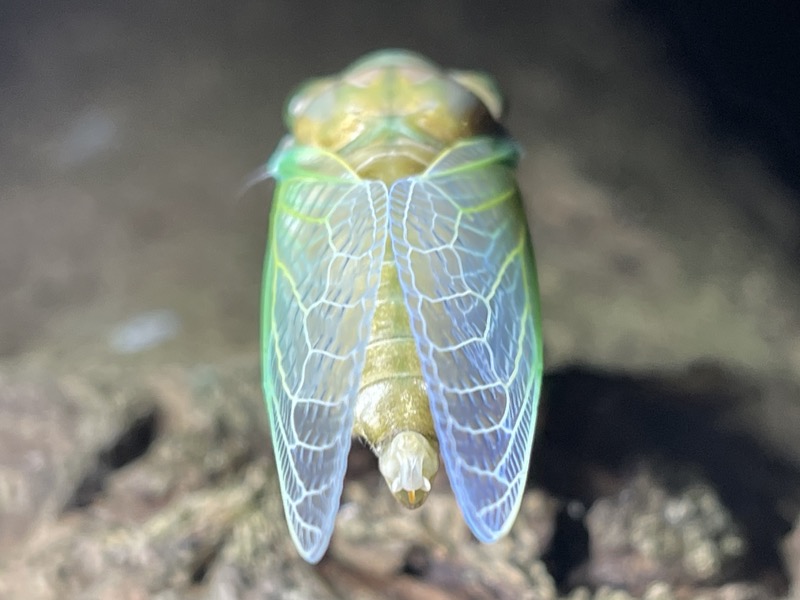
More from the 2022 season: Neotibicen tibicen tibicen female cicada molting, Neotibicen lyricen found in central New Jersey, and Neotibicen linnei in Northern New Jersey.
A Neotibicen tibicen tibicen female cicada molting. Also known as Morning or Swamp cicada. 2022, Central New Jersey.
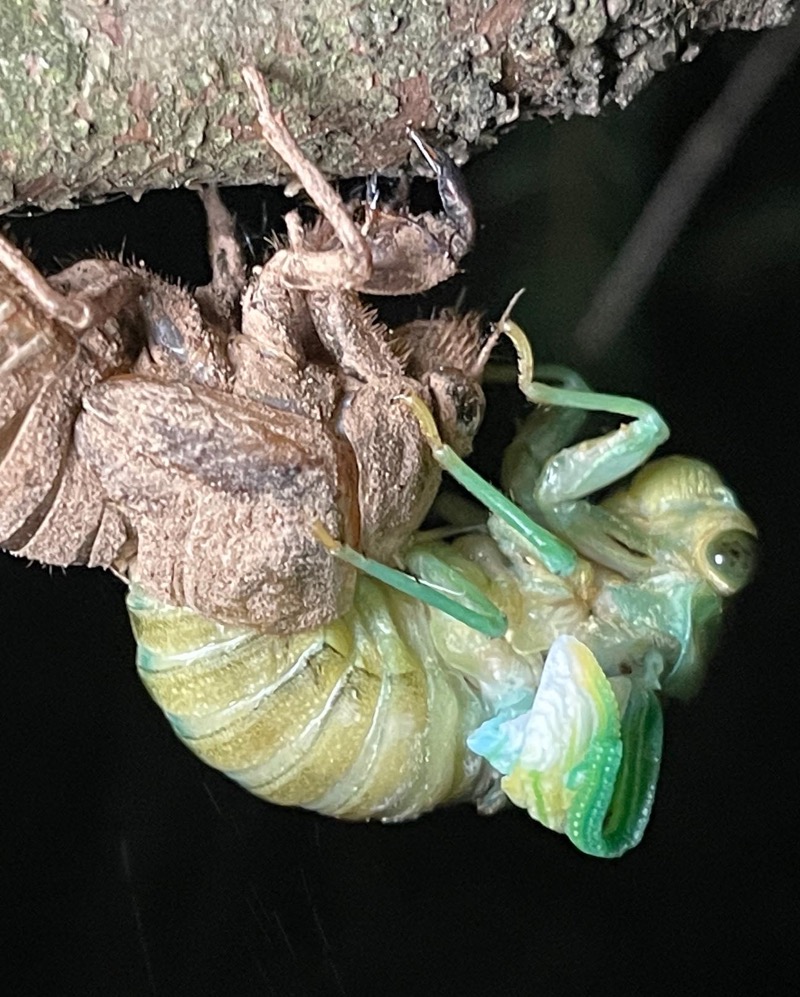
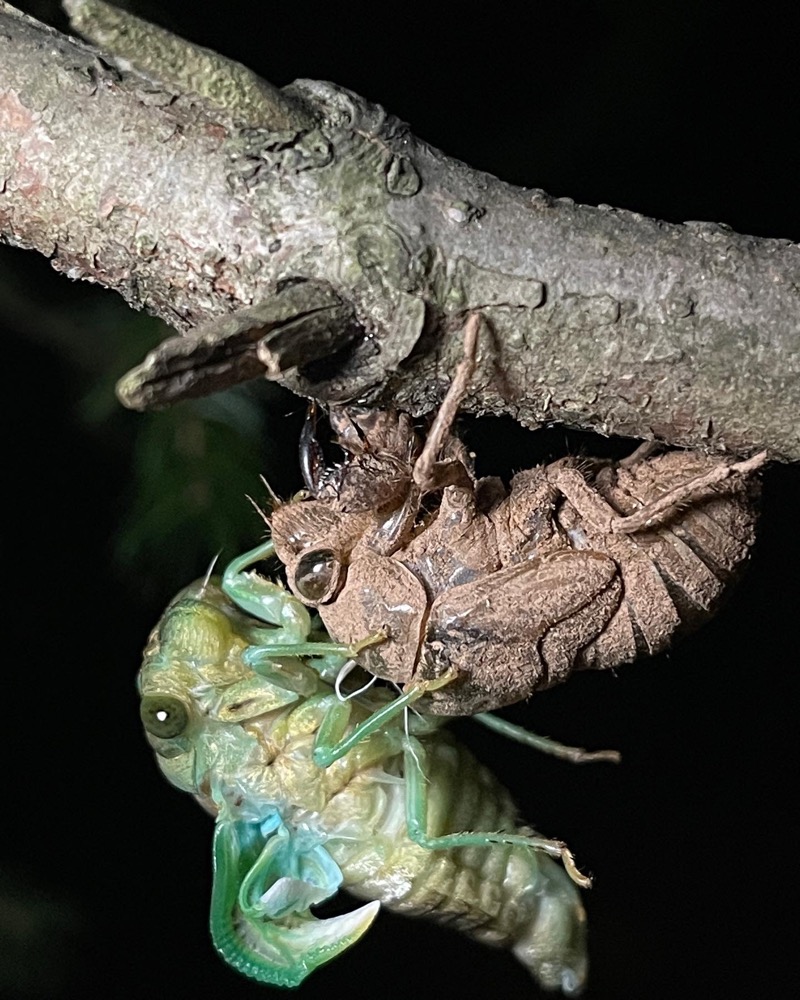
A Neotibicen lyricen engelhardti found in central New Jersey on July 23, 2022, and released on the morning of July 24th.
This cicada is a male. It was less than 12 hours after molting and its colors were not fully resolved (it will get darker). Note the green wings, black collar, and brown “lightbulb-shaped” marking on its head (pronotum).
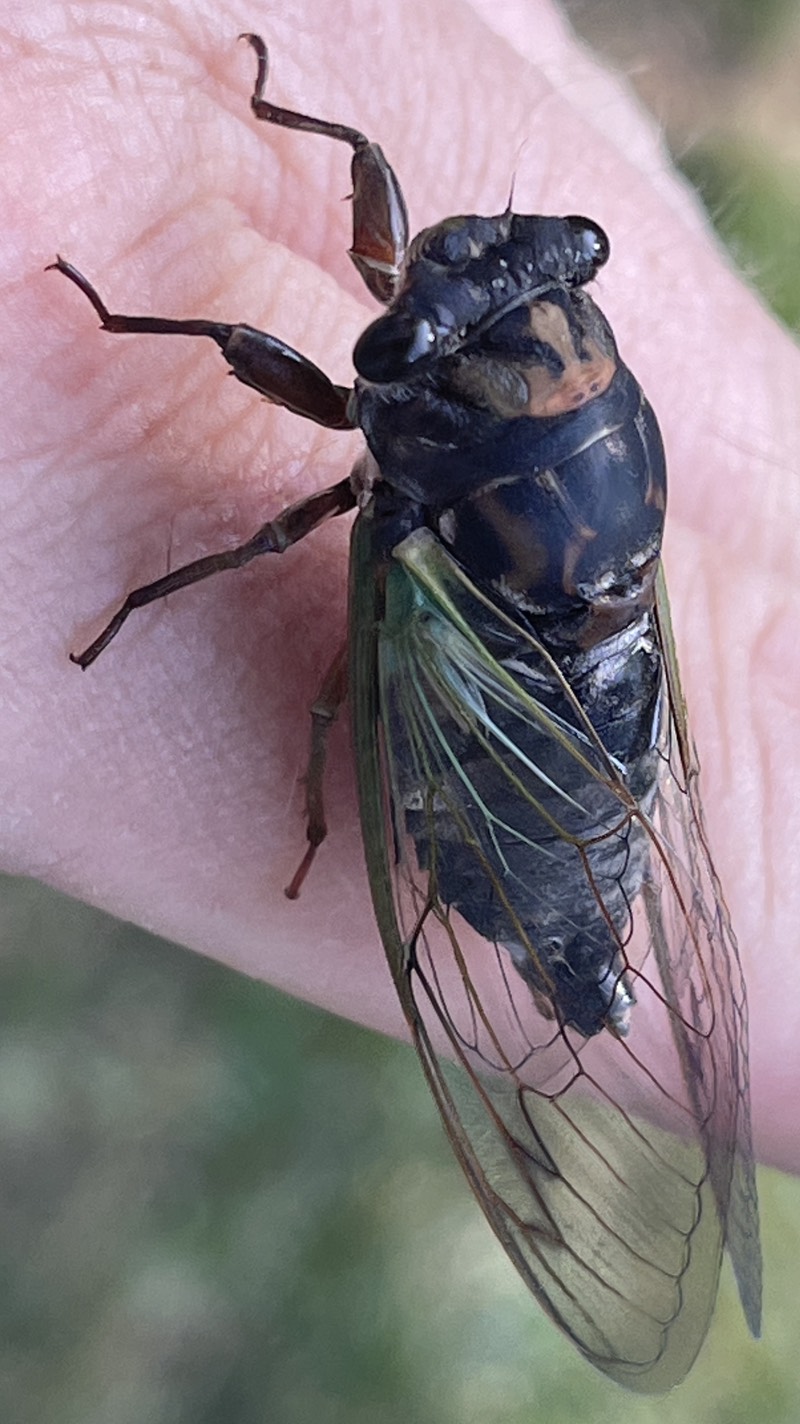
I was hiking the trails on Pyramid Mountain in Boonton, NJ on August 9th, 2022, when I came across a Neotibicen linnei (Smith and Grossbeck, 1907) aka Linne’s Cicada lying on the ground. Pyramid Mountain is geologically interesting and features glacial erratics of all shapes, sizes, and types (180-ton balancing boulders, purple pudding stones, green & black gneiss, green serpentinite, etc.), with plenty of rocks small enough to trip on and “roll an ankle”, so you have to keep your eyes on the trail. The cicada appeared dead, but it came to life once I picked it up. One of its forewings was too damaged to fly, though.
Dorsal view. It is a male. Note the green collar and two white pruinose spots on the sides of the abdomen.
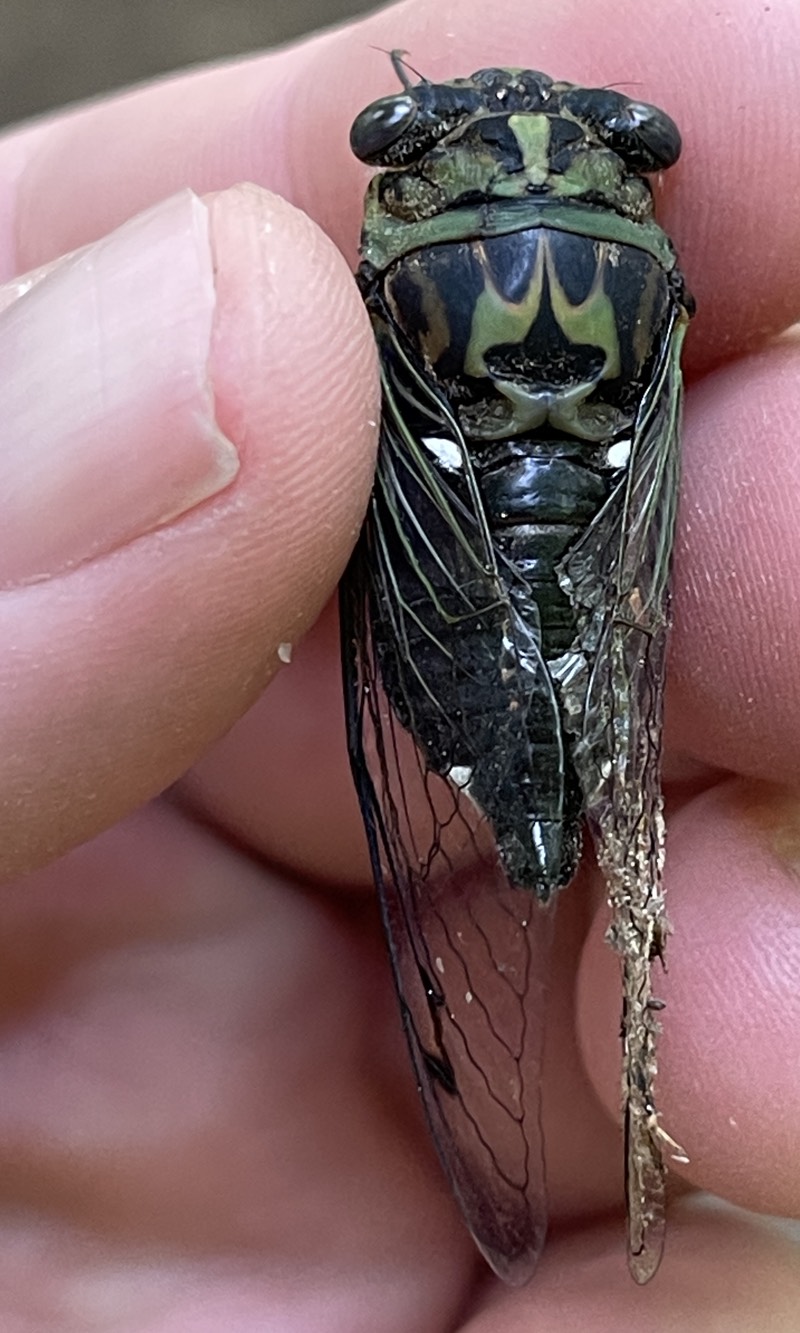
Ventral view. Note the overlapping opercula and clearly defined white pruinose on both sides of the abdomen.
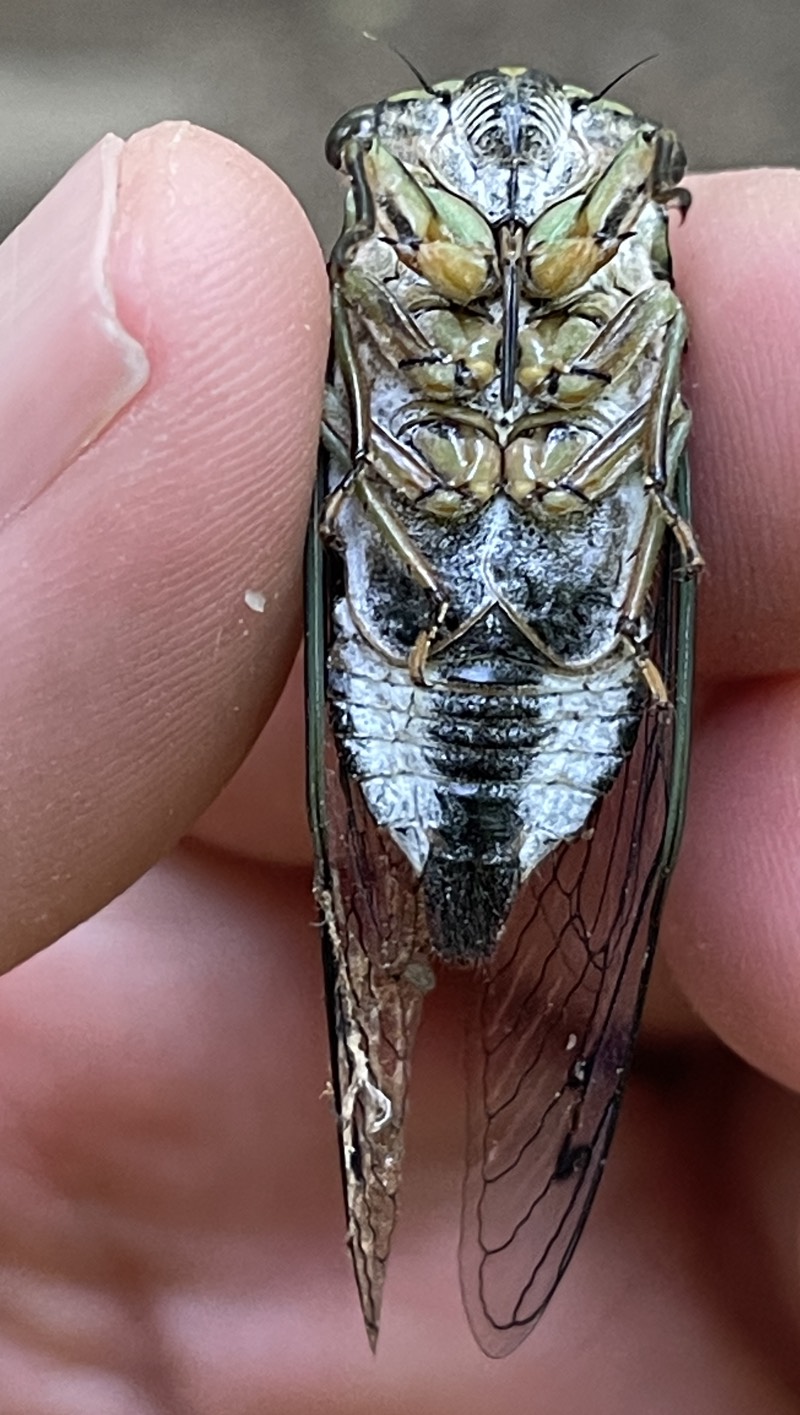
One forewing was damaged, torn, and dirty. It could not fly.
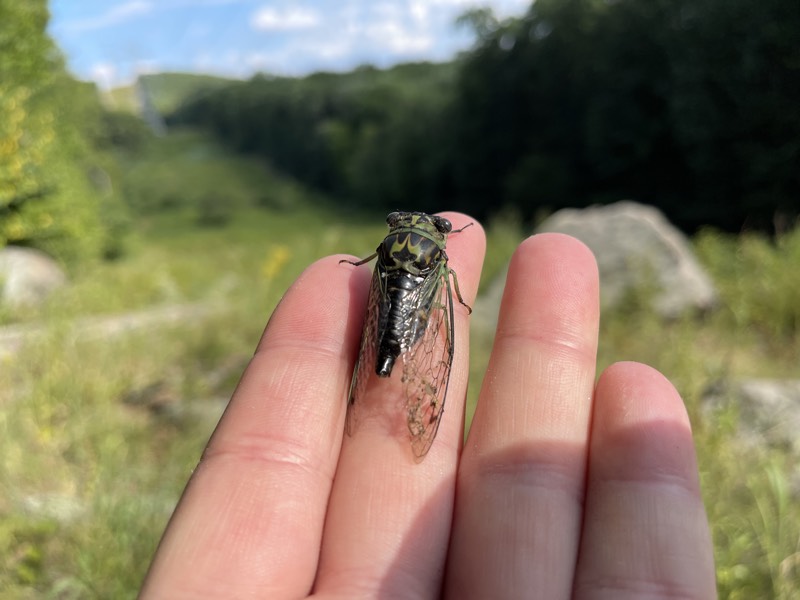
A Green Grocer (Cyclochila australasiae (Donovan, 1805)) cicada toy.
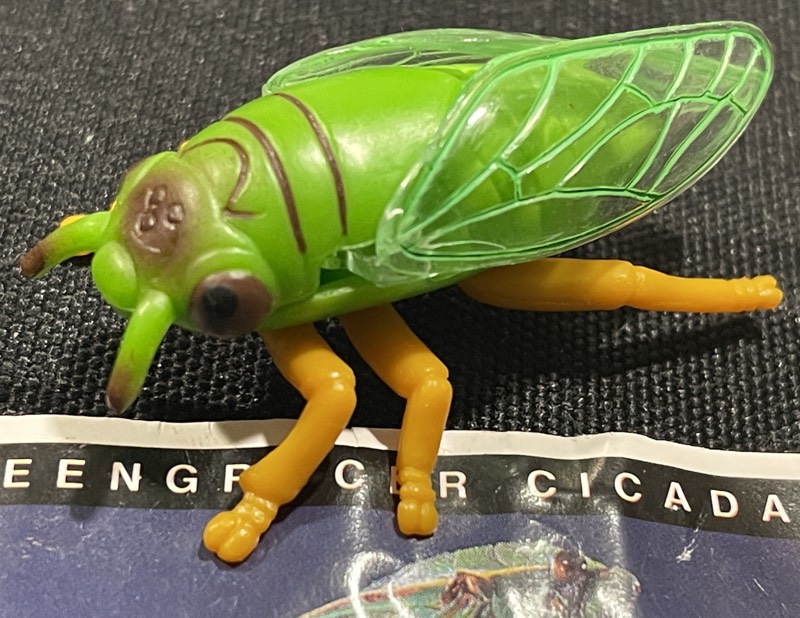
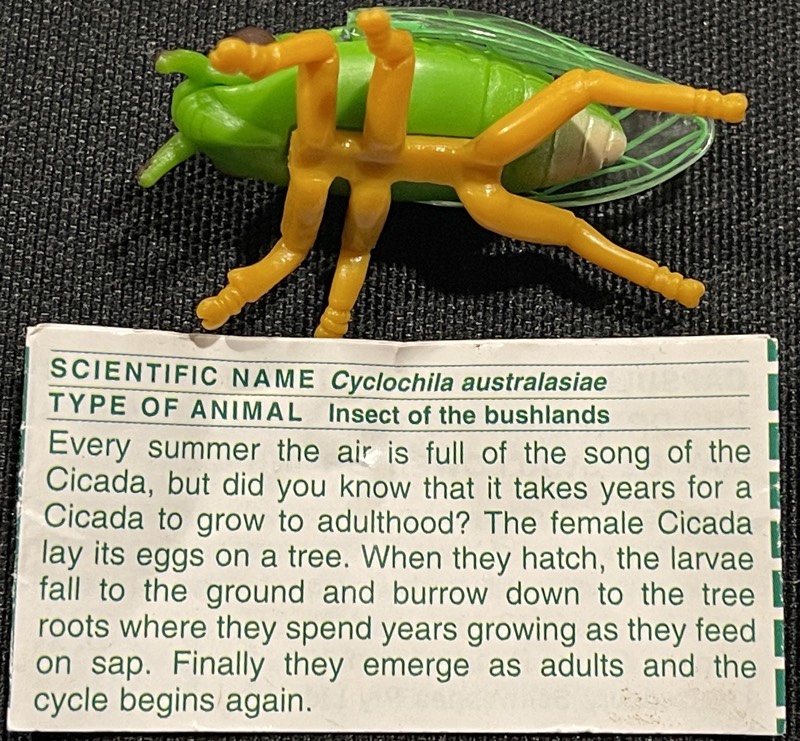
Green Grocers are found in eastern Australia.
A cicada stamp from South Korea. I think it’s a species of Platypleura.
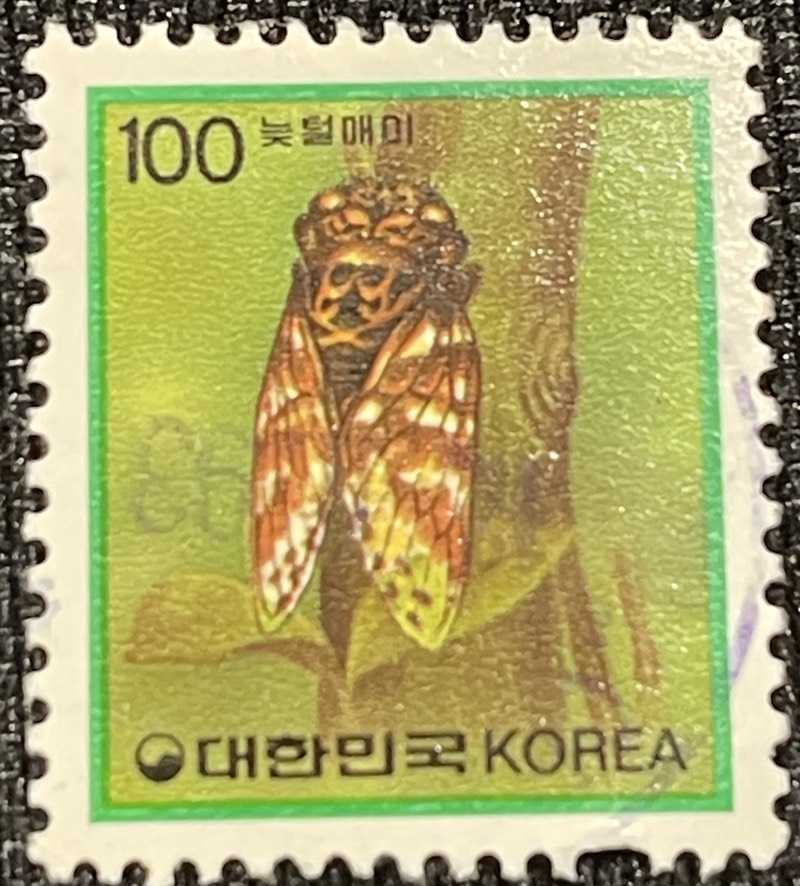
Here’s my latest eBay find: a Brood X Magicicada septendecim disc golf frisbee. Model GStar Wraith.
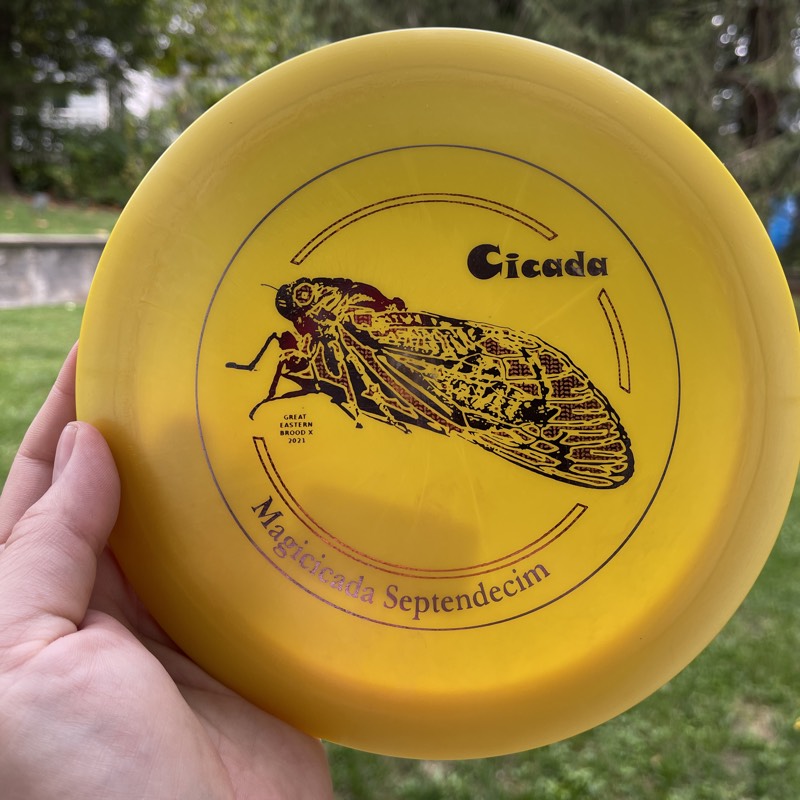
This isn’t the first cicada frisbee I’ve seen. Here’s one from Brood VIII.
Looks like the post office of Australia has cicada themed stamps. As they say in the Pokemon world, “got to collect them all” (or something like that).
Update:
Here’s a photo of the actual stamps. I got them on eBay.
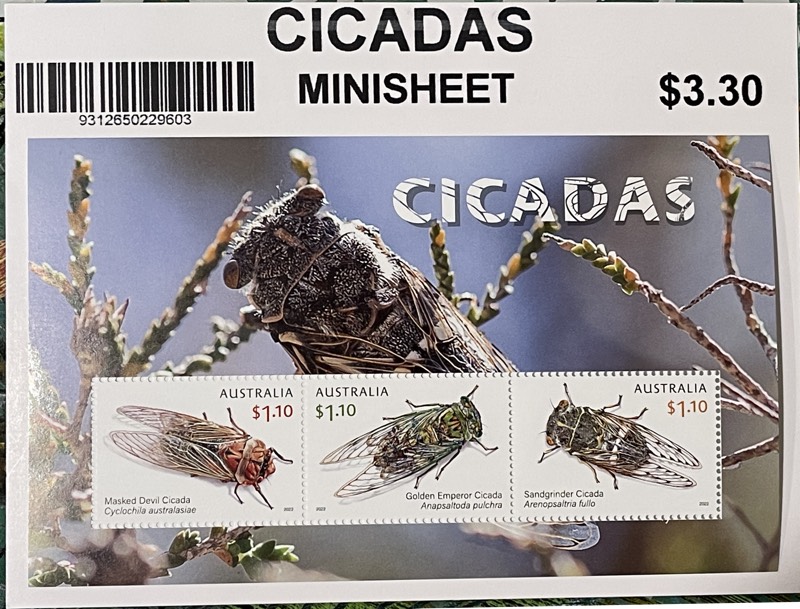
Masked Devil (Cyclochila australasiae) stamp:
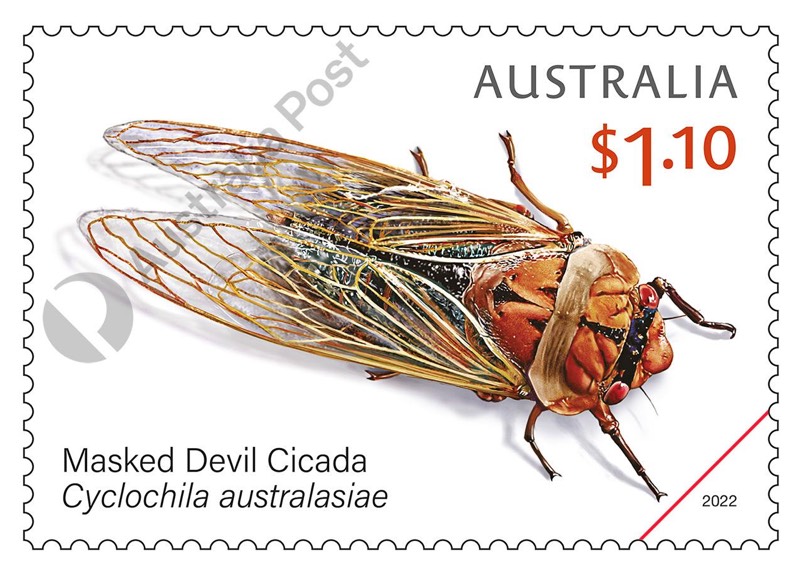
More about Masked Devil cicadas:
Golden Emperor (Anapsaltoda pulchra) stamp:
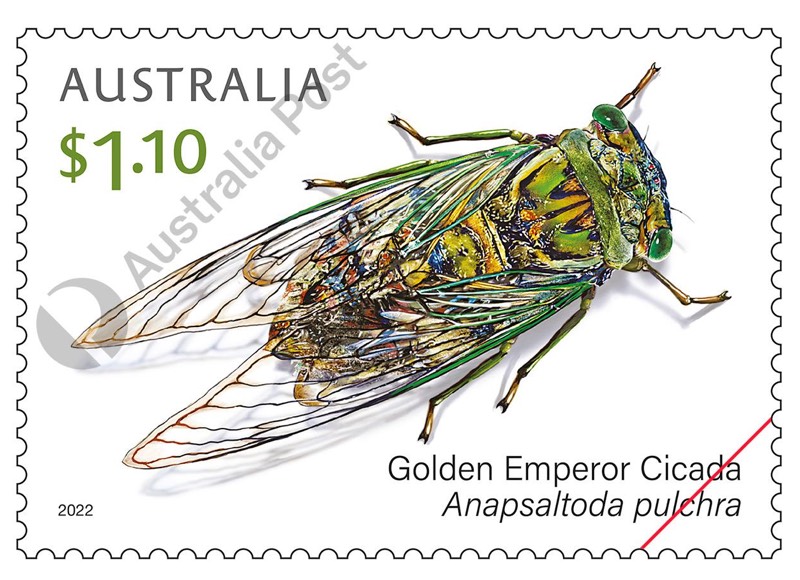
More about Golden Emperor cicadas:
Sandgrinder (Arenopsaltria fullo) stamp:
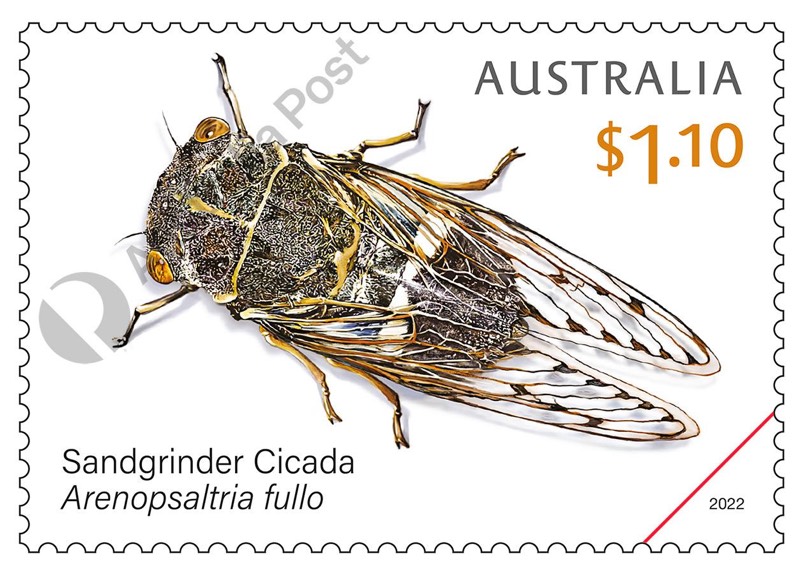
More Sandgrinder cicada action: